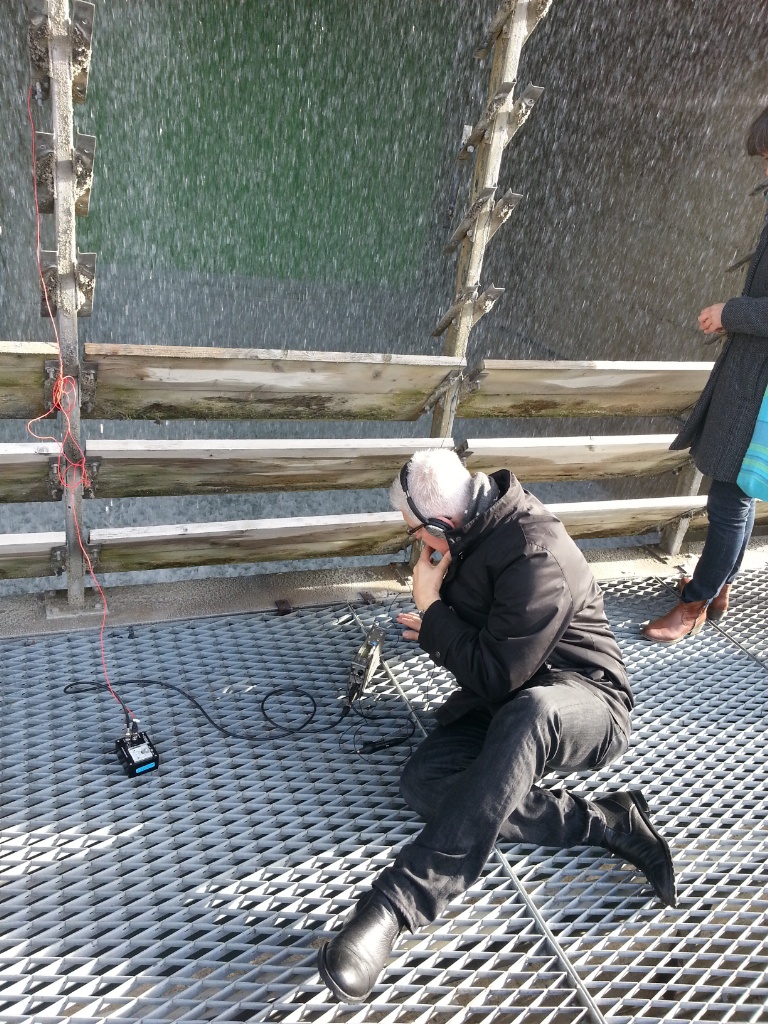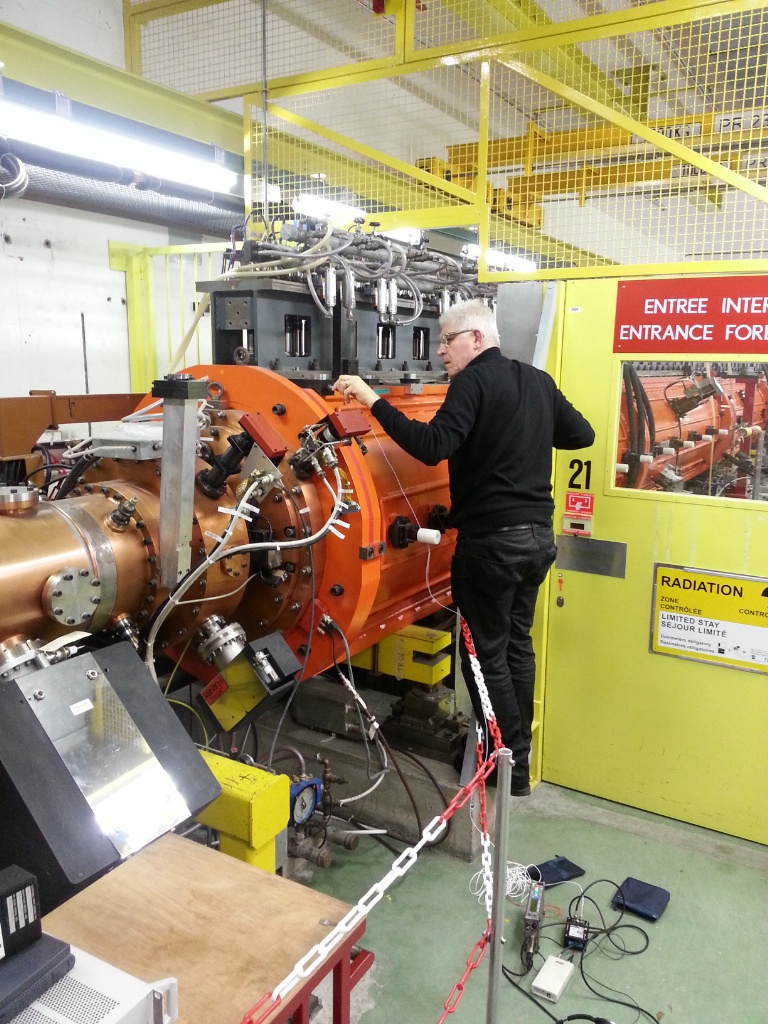This is a guest-post by Johanna Mathauer, responsible for communication and coordination at the Ars Electronica Futurelab.

Bill Fontana doing a sound recording with an accelerometer and an acoustic microphone at one of his favorite spots at CERN, a cooling tower
Bill Fontana, the recipient of the Prix Ars Electronica Collide@CERN Residency Award, was invited to spend four days at CERN in Geneva, Switzerland to get an introduction to CERN’s activities and fields of research. As the program’s coordinator for Ars Electronica, I was honored to be able to spend this time with the artist and Ariane Koek, CERN’s cultural specialist, at this exciting and inspiring place.
The aim was to take maximum advantage of this very short time to enable Bill Fontana to get as well-acquainted as possible with the working environment and a feel for the charisma of this international organization in which approximately 11,000 physicists from about 80 countries are collaborating on a peaceful mission at the forefront of science. In numerous speeches and discussions phrased in laymen’s terms, leading physicists provided us with insights into the fascinating world of leading-edge research in particle physics.
We were briefed by Luis Álvarez-Gaumé, a scientist who has made fundamental contributions to the field of string theory. Pippa Wells told us all about her work on ATLAS, one of the two major experiments being conducted with the Large Hadron Collider. And Michael Doser led us through the hallowed halls of his antimatter experiment, which a delighted Bill Fontana immediately identified as a fruitful source of material for his extraordinary sound recordings.

Bill Fontana doing a recording with two accelerometers at what’s called The Source, the linear accelerator that’s the point of departure of all proton beams fired into the Large Hadron Collider
The artist was introduced to a diversified lineup of potential Inspiration Partners, experts with something special to contribute to a process of scientific-artistic exchange at weekly meetings during Fontana’s two-month stay at CERN—and, thus, get-togethers in the true spirit of encounter that is the essence of Collide@CERN. It’s still undecided with whom Bill Fontana will be working together, but there’s still plenty of time until he commences his Residency in late June.
I’ve already been permitted to enjoy a sneak audiovisual preview of the initial artistic results—a sound collage with a video. The enthusiasm and the fascination this work expresses for CERN, this place and this milieu, feed hope for good things to come and a productive collision of science and art.
